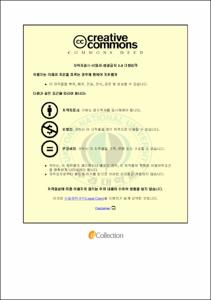강제 순환 혼합 방식에 의한 튜브형 호기성 생물막 처리 장치의 특성
- Alternative Title
- Characteristics of a tubular aeration biofilm reactor using a forced-circulation mixing system
- Abstract
- 강제 순환의 의한 유속을 이용하여 미생물막의 두께를 조절하고 연속적으로 반응조를 운전하는 기술에 대한 연구.
역세 없이 미생물막 반응조에서 안정적인 처리하는 기술에 대한 연구.
This system adjusts characteristics the microbial biomass by changing flow velocities thickness of a microbe film is restricted due to the quick flow velocity in a pipe. The flow velocity is generated by circulating water compulsorily. A biofilm grows in the restricted space in the quick flow velocity. Stable processing is possible if sufficient oxygen is supplied to a biofilm in the quick flow velocity.
The advantage of the contact aeration method was not spoiled by this method. The period in which continuation operation is possible was extended, but control of the stable amount of microbes was impossible.
A slowly biodegradable substance can be treated. However, the generated ammonia may remain. When the source of nitrogen is protein, a proteinic hydrolysis speed determines nitrification efficiency. It is because nitrification capability is high when ammonium-nitrogen is made into the source of nitrogen.
The reaction rate of TN is sensitive to a rapid environmental change. The reaction rates of COD and TP are stable to a rapid environmental change.
This reactor is very simple and small. Although maintenance is hardly required, its power consumption is large.
- Issued Date
- 2009
- Awarded Date
- 2009. 2
- Type
- Dissertation
- Keyword
- 생물막
- Publisher
- 부경대학교 대학원
- Alternative Author(s)
- Takahashi, Hirofumi
- Affiliation
- 부경대학교 대학원
- Department
- 대학원 환경공학과
- Advisor
- 이병헌
- Table Of Contents
- 제1장 서론 = 1
1.1 연구의 배경 = 1
1.2 연구의 목적 = 1
1.3 연구의 개요 = 2
제2장 문헌 연구 = 3
2.1 반응기의 처리 효율 = 3
2.2 1 반응기의 물질수지식 = 3
2.1.2 연속 조형 반응기의 설계 방정식 = 4
2.1.3 관형 반응기의 설계 방정식 = 5
2.1.4 반응기의 성능비교 = 6
2.2 접촉 산화법 = 7
2.2.1 접촉 산화법의 원리 = 7
2.2.2 생물막의 특성과 액체 상태와의 상호작용 = 7
2.2.3 접촉 산화법의 특징 = 9
2.2.3.1 접촉 산화법의 장점 = 9
2.2.3.2 접촉 산화법의 단점 = 9
2.2.4 튜브식 접촉 산화여상법 = 10
2.2.4.1 튜브식 접촉 산화여상법의 원리 = 10
2.2.4.2 튜브식 접촉 산화여상법의 성능 = 10
2.5 생물막형 생물처리 모델 = 11
2.5.1 생물막의 동력학 = 11
2.5.1.1 기질 제거 모델 = 11
2.5.1.2 Monod식 = 14
2.5.1.3 0차 반응 = 14
2.5.1.3.1 완전 기질 침투 = 15
2.5.1.3.2 불완전 기질 침투 = 15
2.5.2 생물막내의 분자확산 = 16
2.5.3 가수분해의 동력학 = 17
2.5.4 반응 속도의 온도 의존성 = 18
2.5.4.1 반응 속도의 온도보정식 = 18
2.5.4.2 탈질속도와 온도의 관계 = 19
2.6 하수의 기질 = 19
2.7 생물막의 두께 = 20
2.7.1유속과 생물막의 관계성 = 20
2.7.2 점성저층의 수리적 추측 = 22
제3장 튜브식 접촉폭기 장치의 연속운전 실험 = 24
3.1 도입 = 24
3.2 실험의 개요 = 24
3.2.1 실험장치 및 운전 방법 = 24
3.2.2 유입 부하의 설정 = 26
3.2.3 공정 내의 미생물량 및 폐쇄의 가능성 = 27
3.3 측정 및 분석 방법 = 29
3.4 반응조의 평균 처리 효율 = 29
3.5 연속 운전 기간 = 30
제4장 처리 수질의 안정화 = 32
4.1 도입 = 32
4.2 실험의 개요 = 32
4.3 처리 수질의 안정화와 용존산소와의 관련 = 32
4.4 외부환경의 변화에 따른 각 성분의 변화 = 35
4.5 SS 유출 특성 = 36
제5장 질산화·탈질반응에 관한 실험 = 37
5.1 도입 = 37
5.2 실험의 개요 = 37
5.2.1 사용 기질 = 37
5.2.2 실험 방법 = 38
5.3 튜브식 접촉 폭기조의 질산화·탈질 효율 = 38
5.4 튜브식 접촉 폭기조의 질산화 한계 = 39
제6장 튜브내의 미생물막의 형태 = 41
6.1 도입 = 41
6.2 실험의 개요 = 41
6.3 생물막의 형성 상태와 성질 = 41
6.4 생물막의 총질량 = 45
제7장 결론 = 46
7.1 연구 결과의 정리 = 46
제8장 장래 연구 = 48
8.1 기술적인 문제점과 장래성 = 48
참고문헌 = 49
- Degree
- Master
- Files in This Item:
-
-
Download
 강제 순환 혼합 방식에 의한 튜브형 호기성 생물막 처리 장치의 특성.pdf
기타 데이터 / 1.71 MB / Adobe PDF
강제 순환 혼합 방식에 의한 튜브형 호기성 생물막 처리 장치의 특성.pdf
기타 데이터 / 1.71 MB / Adobe PDF
-
Items in Repository are protected by copyright, with all rights reserved, unless otherwise indicated.